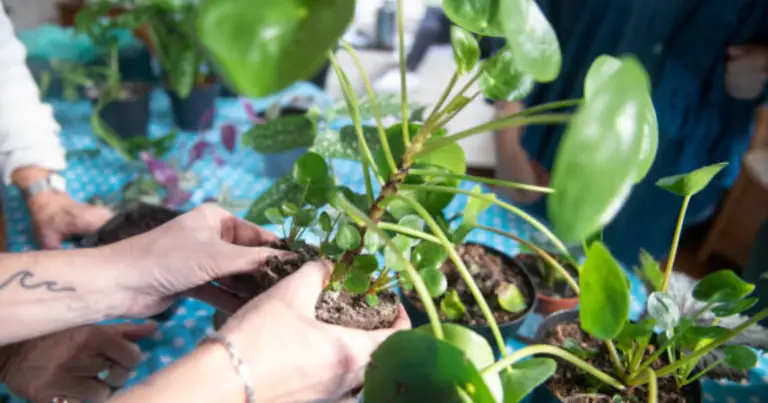Sage Sensations: 37 Festive Varieties
Table of Contents
Sage Varieties from Around the World: Discovering Unique Flavors and Aromas
Sage Sensations, dive into the fascinating realm of Sage Varieties from Around the World, where culinary exploration knows no bounds. This aromatic herb, widely embraced in Mediterranean dishes, unveils a rich tapestry of distinct flavors and aromas, each originating from different corners of the globe. Picture the robust and peppery allure of Greek sage or the delicate, floral notes emanating from South African sage—each variety tells a unique story, enhancing culinary creations with unparalleled depth. This culinary journey isn’t just about taste; it’s an exploration of cultural diversity and the global tapestry of flavors that Sage Varieties bring to your kitchen.
Sage, an aromatic and flavorful herb, has secured its place as a culinary staple in kitchens worldwide. Although often linked to Mediterranean cuisine, the world of sage extends far beyond geographical boundaries, offering an array of varieties, each with distinctive flavors and aromas. Delving into the diverse spectrum of sage opens doors to a culinary journey, transforming ordinary dishes into extraordinary creations. Whether it’s the sharp and peppery essence of Greek sage or the delicate, floral undertones of South African sage, the nuances in taste provide endless possibilities for culinary enthusiasts to explore and elevate their gastronomic experiences.

| Sage Variety | Characteristics | Culinary Uses | Additional Information |
|---|---|---|---|
| Pineapple Sage | Aroma reminiscent of fresh pineapple; bright green leaves. | Used in teas, desserts, and savory dishes to add a tropical sweetness. | Belongs to the Salvia genus and is known for attracting hummingbirds. |
| Tricolor Sage | Striking tri-colored leaves of purple, green, and white. | Adds visual appeal to dishes; imparts a milder and more subtle flavor. | Offers an ornamental aspect, enhancing the presentation of dishes. |
| Greek Sage | Sharp and peppery notes, offering a bold flavor to dishes. | Enhances dishes with its bold and distinctive taste. | A classic Mediterranean herb, commonly used in Greek and Italian cuisine. |
| South African Sage | Delicate and floral undertones, adding a unique twist to recipes. | Brings a unique flavor profile with subtle floral notes. | Native to South Africa, it thrives in warm climates and well-drained soil. |
| Common Sage | Earthy and savory flavor; gray-green leaves. | Versatile herb used in a wide range of dishes, from stuffing to sauces. | Widely used in traditional European and American cuisines. |
Sage Sensations in Traditional Festivals:
Sage holds a special place in traditional festivals around the world. Its aromatic and flavorful properties make it a popular choice for culinary and ceremonial purposes. In many cultures, sage is believed to possess cleansing and healing properties, which is why it plays a significant role in various rituals and celebrations.
One example of sage sensations are being used in traditional festivals is the Native American practice of smudging. Smudging involves burning dried sage leaves and using the smoke to purify a person, object, or space. This ritual is believed to cleanse negative energy and promote spiritual well-being. During important events and gatherings, such as weddings or harvest festivals, smudging with sage is often performed to bless and protect the participants.
In some European countries, sage sensation is an essential ingredient in traditional dishes prepared during specific festivals. For instance, in Italy, sage is commonly used in the preparation of traditional dishes like saltimbocca and pumpkin-filled ravioli during the celebration of All Saints’ Day. Its distinct flavor adds depth and richness to these festive recipes, making them a delight for the taste buds.
The unique flavors and aromas of sage have made it an integral part of traditional festivals worldwide. Whether used for its symbolic significance or culinary excellence, sage continues to captivate and enthrall both participants and onlookers alike.
| Cultural Context | Uses of Sage | Significance |
|---|---|---|
| Native American Smudging | Burning dried sage leaves for purification | Integral in the Native American practice of smudging, used to purify people, objects, or spaces during important events. |
| Italian Culinary Tradition | Sage in dishes like saltimbocca and pumpkin-filled ravioli | Commonly used in Italian cuisine during celebrations like All Saints’ Day, adding flavor and tradition to festive dishes. |
| Culinary Delight | Adding depth and richness to festive recipes | Sage’s unique flavors and aromas enhance festive recipes, creating a delightful culinary experience during traditional events. |
| Symbolic Blessing and Protection | Smudging during important events and gatherings | The act of smudging with sage is believed to bless and protect participants, contributing to the ceremonial and spiritual aspects. |

Sage, the sage sensations with its unique flavors and aromatic essence, has seamlessly woven itself into the tapestry of traditional festivals across the globe. Beyond its culinary excellence, sage sensations plays a vital role in symbolic rituals, captivating participants and onlookers alike with its multifaceted significance.
In Native American traditions, sage takes center stage in the sacred practice of smudging. Dried sage leaves are meticulously burned, releasing a purifying smoke that cleanses people, objects, or spaces during important events and gatherings. This ritual, known as smudging, holds profound spiritual significance, symbolizing the removal of negative energies and the invocation of positive forces. The fragrant plumes of sage smoke are believed to usher in a sense of purity and protection, creating an atmosphere conducive to spiritual and communal connection.

The culinary realm also embraces sage sensations with gusto, particularly in the vibrant tapestry of Italian traditions. During celebrations like All Saints’ Day, sage becomes a culinary star, gracing dishes like saltimbocca and pumpkin-filled ravioli. In these festive delicacies, sage imparts not only its distinctive flavor but also a sense of tradition and cultural richness. The aromatic allure of sage-infused dishes becomes a centerpiece of joyous gatherings, where the blending of flavors mirrors the amalgamation of shared heritage and festive cheer.
Beyond its symbolic and culinary roles, sage contributes to the sheer delight of traditional festivals. Its unique flavors add depth and richness to festive recipes, creating a sensory experience that transcends the ordinary. Sage-infused delights become a culinary celebration, stimulating the taste buds and elevating the festive atmosphere. The herb’s versatility shines through, enhancing a spectrum of dishes with its earthy and savory notes, making it a cherished ingredient in the gastronomic repertoire of traditional festivities.
| Sage Variety | Scientific Name | Characteristics | Culinary Uses |
|---|---|---|---|
| Purple Sage | Salvia officinalis ‘Purpurascens’ | Distinct purple foliage; savory and earthy flavor. | Used for ornamental purposes and adds a unique color to dishes. |
| Berggarten Sage | Salvia officinalis ‘Berggarten’ | Broad, rounded leaves with a milder flavor; often used in salads. | Suitable for garnishing and incorporating in fresh dishes. |
| Mexican Sage | Salvia leucantha | Long spikes of tubular flowers in various colors; sweet aroma. | Used for infusions, teas, or as a garnish for desserts. |
| Russian Sage | Perovskia atriplicifolia | Silvery-green foliage with lavender-blue flowers; aromatic. | More commonly used in landscaping; flowers may be used for garnish. |
| White Sage | Salvia apiana | Silvery-white leaves; strong, resinous aroma. | Traditionally used in Native American ceremonies; not typically for culinary use. |
| Black Sage | Salvia mellifera | Dark green leaves with a strong fragrance; often found in California. | Used in traditional Native American medicine; not commonly culinary. |
In the symbolic realm, sage emerges as a potent symbol of blessing and protection. The act of smudging with sage is a ceremonial practice during important events and gatherings, signifying not only purification but also the invocation of positive energies. The fragrant smoke is believed to carry prayers and intentions, making sage an integral component of spiritual and ceremonial spaces. Participants engage in the act of smudging with reverence, seeking the blessings and protective qualities that sage is thought to bestow.
In essence, sage transcends its botanical identity to become a cultural ambassador in traditional festivals. Its aromatic presence, whether wafting through sacred rituals or infusing festive dishes, carries a legacy of tradition, symbolism, and culinary excellence. Sage becomes a bridge between the tangible and the symbolic, enriching the sensory and spiritual dimensions of traditional festivities
| Sage Variety | Scientific Name | Characteristics | Culinary Uses |
|---|---|---|---|
| Common Sage | Salvia officinalis | Earthy and savory flavor; gray-green leaves. | Versatile herb used in stuffing, sauces, and various dishes. |
| Pineapple Sage | Salvia elegans | Aroma reminiscent of fresh pineapple; bright green leaves. | Used in teas, desserts, and savory dishes for tropical sweetness. |
| Tricolor Sage | Salvia officinalis ‘Tricolor’ | Striking tri-colored leaves of purple, green, and white. | Adds visual appeal to dishes; imparts a milder flavor. |
| Greek Sage | Salvia fruticosa | Sharp and peppery notes; small, gray-green leaves. | Enhances dishes with bold and distinctive Mediterranean taste. |
| South African Sage | Salvia africana-lutea | Delicate and floral undertones; gray-green leaves. | Adds a unique twist to recipes with subtle floral notes. |
What are the different varieties of sage mentioned in the article?
The article discusses several sage varieties from around the world, including White Sage, Clary Sage, and Pineapple Sage.
What are the unique flavors and aromas of these sage varieties?
Each sage variety has its own distinct flavor and aroma. White Sage has a strong, earthy scent, Clary Sage has a sweet and herbal aroma, and Pineapple Sage has a fruity and tropical flavor.
Are there any other traditional festivals where sage is commonly used?
Yes, aside from the traditional festivals mentioned in the article, sage is also commonly used in festivals such as Beltane, Samhain, and Día de los Muertos.
Are there any specific rituals or customs associated with sage in traditional festivals?
Yes, in many traditional festivals, sage is used for smudging rituals, purification ceremonies, and as an offering to deities or ancestors.
Can sage be used for culinary purposes as well?
Absolutely! Sage is widely used in cooking, particularly in Mediterranean and American cuisine, to add flavor to dishes such as roasted meats, stuffing, and sauces.
Are there any medicinal benefits associated with sage?
Yes, sage has been used for centuries in traditional medicine for its potential medicinal properties, including its anti-inflammatory, antimicrobial, and antioxidant effects.
Can sage be grown in home gardens?
Yes, sage is a hardy herb that can be easily grown in home gardens. It prefers well-drained soil, sunlight, and regular pruning to promote healthy growth.
Can sage be used in alternative forms such as essential oils or teas?
Certainly! Sage essential oils can be used in aromatherapy, while sage teas are popular for their soothing and relaxing properties.
Is sage safe for everyone to consume or use?
While sage is generally considered safe, it is always recommended to consult with a healthcare professional, especially if you have any underlying medical conditions or are pregnant or breastfeeding.
Where can one purchase different sage varieties mentioned in the article?
Sage varieties can be found at local nurseries, herbal shops, or even online retailers specializing in herbs and spices.

Beck Wakeford is a dedicated writer at SouthElMonteHydroponics, with a fervent enthusiasm for agriculture and technological innovation. Armed with a degree in Agricultural Engineering from a leading university, Beck specializes in hydroponic systems design, automation, and optimization. Their passion for merging traditional farming with cutting-edge technology drives them to explore novel solutions for sustainable food production. Beck’s expertise and keen interest in the intersection of engineering and agriculture make them a valuable asset in the quest for efficient and eco-friendly farming practices. Through their writing, Beck aims to inspire others to embrace the potential of hydroponics in shaping a more sustainable future.





